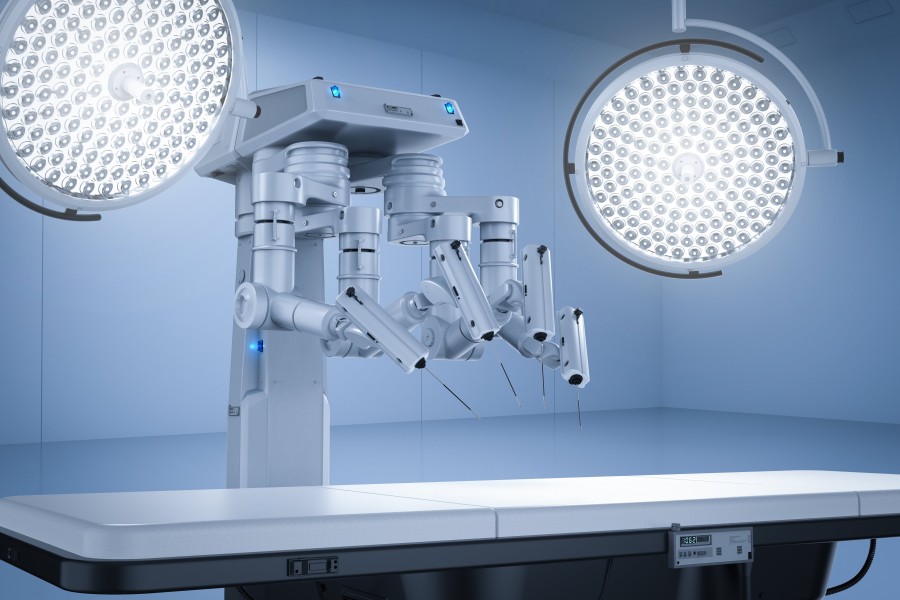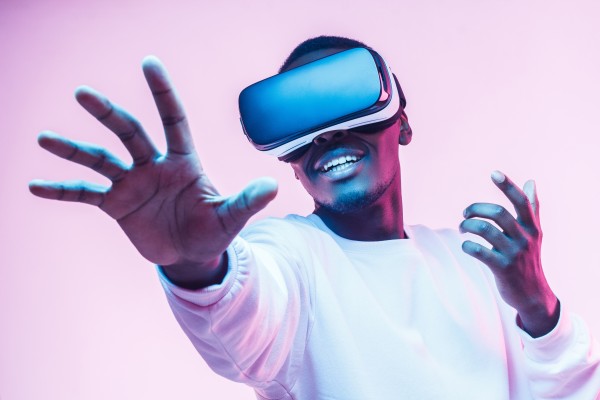There are several types of VR. The first is "Cave Automatic Virtual Reality (CAVE)". With large, curved screens or VR glasses, people are fully immersed in VR. The second is the "mixed reality". The most usual form here is Augmented Reality (AR). Reality is supplemented with VR technology, for example with glasses or a camera.
In private households, VR is mostly known for games, but it can be used in various subject areas today!
Virtual Reality for Healthcare
Although it may not seem obvious, virtual reality can significantly help healthcare. It uses mixed reality in most cases.
In this way, for example, complicated operations can be prepared. With preoperative planning, the human body can be simulated in a virtual room and the doctors, equipped with VR cloves and VR glasses, can train for the upcoming operation. This improves patient safety, but also efficiency in surgery.
Another healthcare application is robotics with implemented VR. Human hands are too rough for many sensitive and minimally invasive procedures. The doctor can connect to more precise robots and improve their accuracy.
AR can also be used to visualize upcoming treatment for patients. With the help of AR, doctors can help patients understand the operation, which should redcuce anxiety and help clear up misunderstandings.

Virtual Reality for Business
Virtual reality is already universally incorporated into the daily routine of many companies in a wide variety of fields. Software offers the possibility to create 3D models of constructions and interact with them. The user can inspect the object for safety issues, function, or defects. This increases the productivity and efficiency of inspections. It can also speed up maintenance tasks, making process optimization much easier. Logistics can also be optimized with augmented reality. Glasses with an integrated display can show statistics such as stock levels and the location of goods and assist with inventory.
It is not just manufacturing that benefits from VR. It can also be used for workshops. People can be placed in environments to help them understand the subject. It supports the participants' imagination and opens new possibilities for interaction.
Products can be presented in a completely new way and market staging can be shown in more detail, saving time and money by saving them the trip. In addition, building tours can be conducted directly in VR, which also increases efficiency.
Virtual reality for Construction
Virtual reality can be of great advantage when planning buildings. 3D models can be viewed in 1:1 perspective. It enables walk-throughs without even being in the same country. Planning and safety issues can thus be identified at an incredibly early stage. For building owners, of course, this is particularly advantageous. They can use 3D models to walk through their new house before it is built and modify parts of their future home that could not be changed once the building is completed.

Telecommunications in Virtual Reality
Virtual reality in telecommunications combines all of the above. Different users in separate locations can connect to VR (including VR or devices only) and help without having to be on site: Doctors can perform surgeries from anywhere in the world. Inspections can be done with experts from all over the world, professionals can share their knowledge with everyone, and buildings can be inspected from anywhere. And all this in real-time! The combination of telecommunications and virtual reality increases the connectivity of people and offers an enormous number of possibilities.
To conclude
The use of Virtual Reality increases efficiency, effectiveness, and safety, and at the same time reduces time and downtime. Unfortunately, the cost of VR-systems is still remarkably high in many areas, but in the future, more advanced technology and optimized production can lower the price of VR, making it accessible to most. But Virtual reality already is a solution for many industries and applications. The ones presented here were just the beginning. Here are more companies working on and with Virtual Reality.
Quickscout
Looking for suitable
technology providers?
Start scouting!






